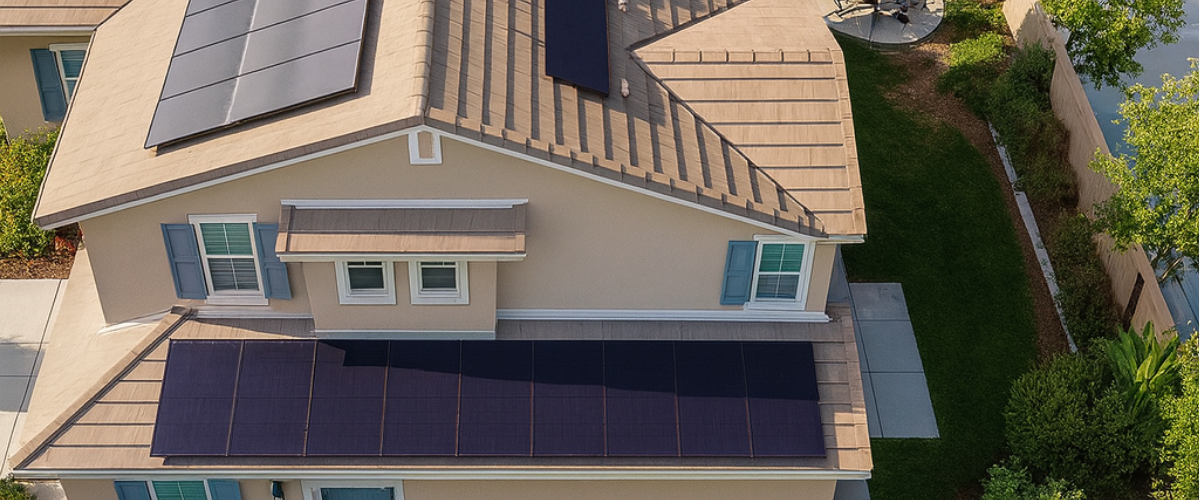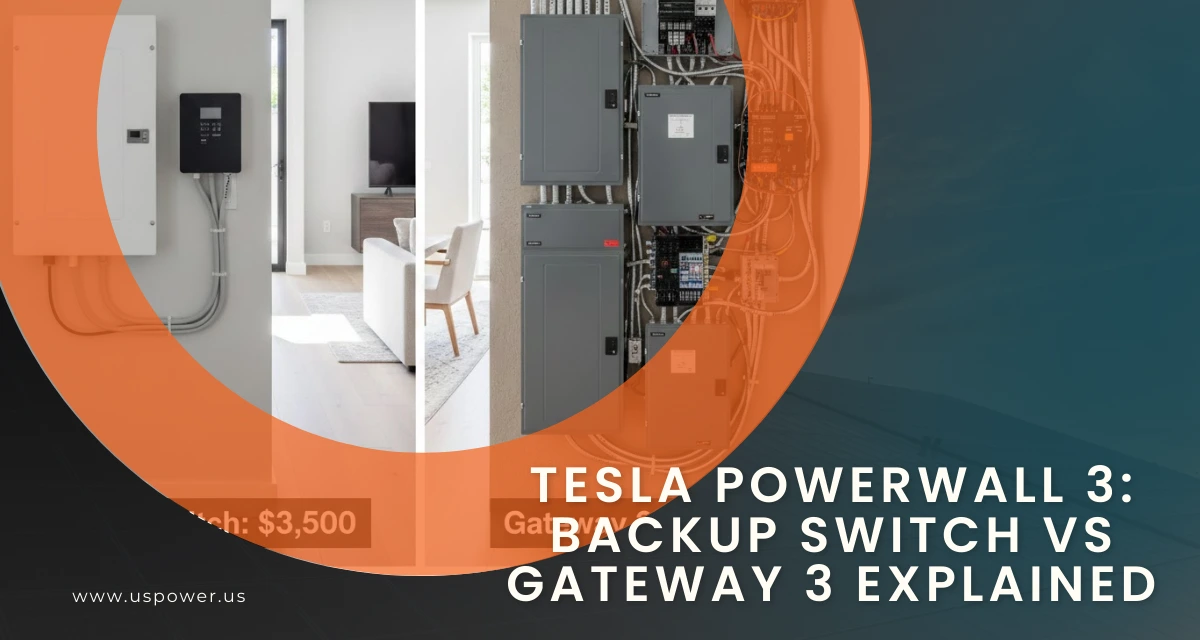Everything YOU NEED TO KNOW About Solar And Battery Storage

Solar and Roofing Advisor
The future of energy savings with solar and battery storage! Discover how these powerful duo can reduce bills, and boost sustainability.

As energy costs continue to rise and the push for sustainable living grows stronger, more homeowners are turning to solar and battery storage solutions. But what exactly are these systems, and how can they benefit you? In this comprehensive guide, we'll dive into everything you need to know about solar and battery storage, including how it works, its benefits, and practical applications.
Understanding Solar and Battery Storage
Solar and battery storage systems combine solar panels with battery units to store energy generated from sunlight. This setup allows homeowners to use solar power even when the sun isn't shining, providing a reliable and eco-friendly energy source.
How Solar Battery Storage Works
When solar panels capture sunlight, they convert it into electricity. This electricity can be used immediately or stored in batteries for later use. The stored energy can power your home at night or during cloudy days, ensuring a continuous power supply. This is particularly beneficial in areas prone to power outages, as solar power battery backup systems can keep your home running smoothly.
Benefits of Solar Energy Storage
There are several compelling reasons to consider solar storage solutions for homes:
1. Energy Independence
- Store excess solar energy generated during the day for use at night or during cloudy periods.
- Reduce reliance on the grid and protect yourself from rising utility rates.
2. Backup Power During Outages
- Keep your lights, appliances, and essential devices running during blackouts.
- Especially valuable in areas prone to wildfires, storms, or rolling blackouts (like California).
3. Maximize Solar Savings
- Use stored energy during peak utility rate hours to avoid higher time-of-use (TOU) charges.
- Sell surplus power back to the grid when rates are highest (if net metering applies).
4. Lower Carbon Footprint
- Increase the percentage of clean, renewable energy powering your home—even at night.
- Reduce dependence on fossil-fuel-based grid electricity.
5. Smarter Energy Management
- Monitor and control your energy usage in real-time via smart apps and software.
- Optimize battery usage based on weather forecasts, consumption trends, and rate schedules.
6. Add Home Value
- Homes with solar + storage are more attractive to eco-conscious buyers.
- Long-term energy savings can translate into higher resale value.
Pro Tip:
Many states, including California, offer incentives or rebates for solar battery storage through programs like SGIP (Self-Generation Incentive Program). Be sure to ask your installer if you qualify.
Choosing the Best Solar Battery Storage Systems
When selecting a solar battery storage system, consider the following factors:
1. Battery Capacity (kWh)
- What it means: The total amount of energy the battery can store.
- Why it matters: Higher capacity means more stored energy to use at night or during outages.
- Tip: Average homes benefit from a battery in the 10–20 kWh range.
2. Power Rating (kW)
- What it means: The amount of power the battery can deliver at once.
- Why it matters: Determines how many appliances/devices you can run simultaneously.
- Tip: Look for a continuous power rating that supports your essential loads.
3. Battery Chemistry
- Most common types:
- Lithium-ion (LiFePO4) – long lifespan, compact, fast charging
- Lead-acid – cheaper upfront, but shorter lifespan and lower efficiency
- Tip: Lithium-ion is the preferred option for most modern home systems.
4. Depth of Discharge (DoD)
- What it means: How much of the battery’s energy can be used without shortening its life.
- Why it matters: A higher DoD (like 90–100%) allows you to use more of the battery’s capacity.
- Tip: Choose batteries with 80%+ DoD for better long-term performance.
5. Battery Lifespan & Warranty
- Measured in cycles or years—whichever comes first.
- Look for systems with at least 10-year warranties and 5,000+ cycles.
- Tip: Warranties that guarantee a minimum capacity after 10 years are a good sign of quality.
6. Cost and Incentives
- Consider the total installed cost, not just the battery itself.
- Check for local rebates (like California’s SGIP) and federal tax credits.
- Tip: Many solar loans or financing programs now include battery storage.
7. Smart Features and Integration
- Choose systems with app-based monitoring, energy optimization, and time-of-use programming.
- Compatibility with your solar inverter and utility programs (e.g., virtual power plants) is also important.
Top Brands to Consider
- Tesla Powerwall – Sleek design, scalable, popular in California
- Enphase IQ Battery – Modular, safe, great for homes with Enphase inverters
- LG Energy Solution (RESU) – High performance, compact
- Sonnen – Premium energy management features and long lifespan
- Qcells Q.HOME – Integrated with Qcells panels, ideal for factory-direct systems
Practical Applications and Real-World Examples
Many homeowners have successfully integrated solar and battery storage into their energy plans. For instance, a family in California reduced their energy bills by 50% after installing a solar system with battery storage. Similarly, a small business in Texas maintained operations during a power outage, thanks to their solar power battery backup system.
Actionable Steps to Implement Solar and Battery Storage
1. Assess Your Energy Needs
- Review your past utility bills to understand your average usage.
- Identify your goals: lowering bills, backup power, or full energy independence.
- Determine if you need storage for essential loads only or for whole-home backup.
2. Evaluate Your Roof and Property
- Check your roof’s condition, orientation, and shading (south-facing roofs are ideal).
- Ensure there’s enough space to install the necessary number of panels.
- Consider ground-mounted systems if roof space is limited.
3. Get a Professional Solar Site Assessment
- Contact a reputable solar provider to inspect your roof, electrical system, and sun exposure.
- Ask about storage options, panel placement, and expected system output.
- Ensure they provide a detailed proposal with estimated savings and ROI.
4. Explore Financing and Incentives
- Compare purchase, loan, lease, and PPA (Power Purchase Agreement) options.
- Take advantage of the 30% Federal Solar Tax Credit and state/local incentives like California’s SGIP (Self-Generation Incentive Program).
- Consider financing programs that include battery storage.
5. Choose Your Equipment
- Select solar panels, inverters, and battery storage systems based on:
- Capacity (kWh)
- Efficiency and lifespan
- Warranty and manufacturer reputation
- Ensure compatibility between your solar and battery systems.
6. Schedule Installation
- Work with your installer to schedule the installation date.
- Make any necessary upgrades to your electrical panel or roof beforehand.
- Allow time for permitting and utility approvals (your installer should handle this).
7. Monitor and Optimize Your System
- Use your solar app to track energy production and battery usage in real-time.
- Set up preferences for backup power, cost savings, or self-consumption.
- Review system performance regularly and schedule maintenance as needed.
Pro Tip:
Choose a solar provider that offers ongoing support and system monitoring. The right partner will help you optimize performance and respond quickly to any issues.
Ready to Power Your Future with US Power?
Investing in solar and battery storage is a smart move towards a sustainable and cost-effective energy future. By understanding how solar battery storage works and selecting the best solar battery storage systems, you can enjoy the benefits of solar energy storage and gain energy independence. Whether you're looking to reduce your carbon footprint or safeguard your home against power outages, solar storage solutions offer a reliable path forward.
For those ready to make the switch, US Power is here to help.
As a trusted energy solutions provider, US Power can guide you through the process of selecting and installing the right solar and battery storage system for your needs. Contact them today to start your journey towards a greener, more resilient home.
Frequently Asked Questions
Related Articles
Our Related Blogs
Learn why most Tesla Powerwall 3 installers overcomplicate battery backup designs.
Understand SoCal solar battery costs and incentives before you call for installation.
Switch to smarter charging—discover EV charger options and solar savings with us!








We empower communities and businesses to harness clean, renewable solar energy solutions that drive sustainable growth.
Ready to Own Your Power? Call us today!
818-650-8010
Copyright © 2025 US Power - Axia by QCells. All Rights Reserved.
Privacy is important to us, so you have the option of disabling certain types of storage that may not be necessary for the basic functioning of the website. Blocking categories may impact your experience on the website.
Essential
These items are required to enable basic website functionality.
Personalization
These items allow the website to remember choices you make (such as your user name, language, or the region you are in) and provide enhanced, more personal features.
Marketing
These items are used to deliver advertising that is more relevant to you and your interests.
Analytics
These items help the website operator understand how its website performs, how visitors interact with the site, and whether there may be technical issues.
We and our third-party partners use cookies and other technologies to enhance and track your experience on this site, conduct analytics, and personalize marketing to you. By using the site, you agree to our use of these technologies, including recording and monitoring your interactions with the site.
Get an instant solar estimate using satellite!






%20Chargers%20in%20SoCal%202025%20Thumbnail.png)


